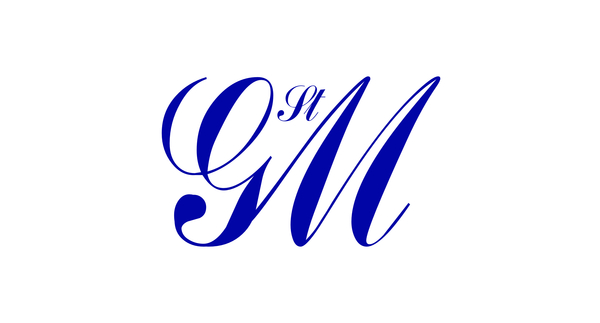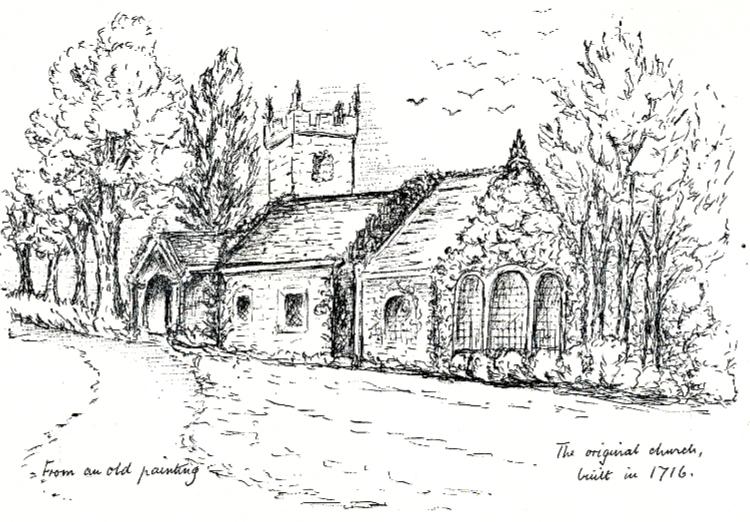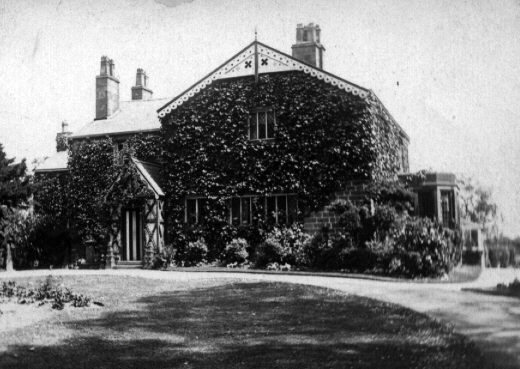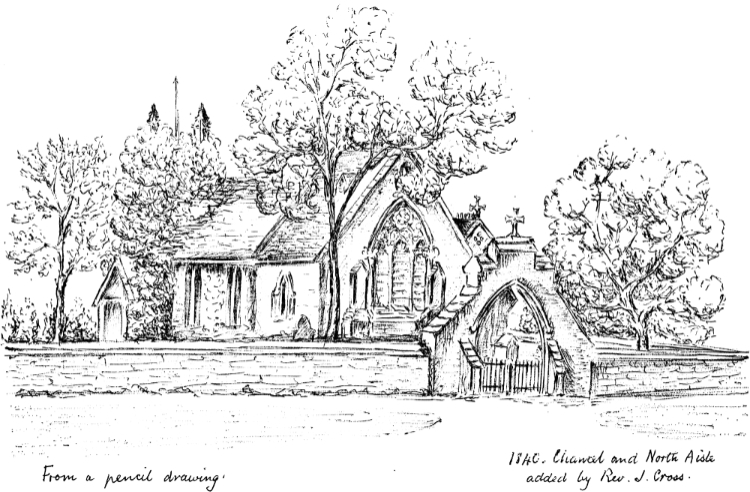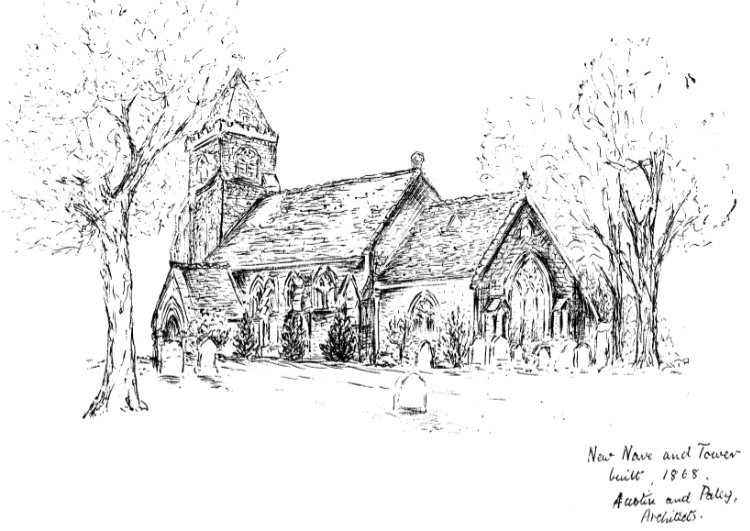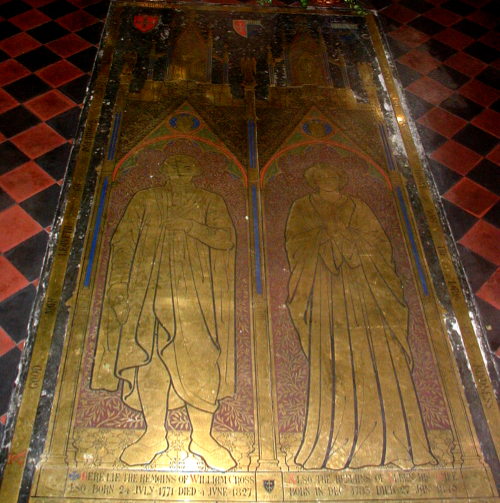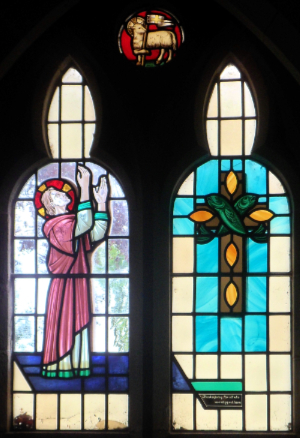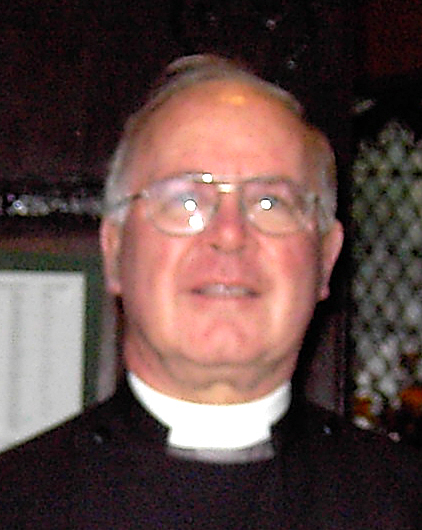The History of Grimsargh Church
The Building
Church Brass
Stained Glass Windows
Curates and Vicars
The Mothers' Union
The Start
Early in the 18th century there was no church in the hamlet of Grimsargh. People had to travel to Preston Parish Church.
In 1715 Samuel Peploe, the Vicar of Preston wrote to the Bishop of Chester, asking for his approval to build a church in Grimsargh. On this being granted, Sir Henry Hoghton (patron of Preston Parish Church) gave the land to build it on.
1716
The church was completed. It was built of Longridge Stone and was 46ft.long & 19ft. wide.
The area around was used as a burial ground.
The church was dedicated to St.Michael.
1824
The vicarage was built across the road from the church.
1840
The church was extended.
The existing chancel replaced the old smaller one and the north side was built to the same height as the old nave.
1868
Work began on the new nave and the tower. The cost of this work,£3,000 was borne by the Rev. J. Cross. During the time that this work was going on, the services were held in the school. The church was re-opened on January 2nd.1869. Nothing remains of the old church, except the mark of the old nave across the wall of the new chancel and some stone pinnacles and a font.
The Building
The old tower had two bells. The smaller one was supposed to have been stolen from Fernyhalgh. The present tower has one bell, the larger one, said to have been brought from Preston Parish Church. It weighs 6 cwt. and is inscribed, "Jesus be our speed,1765."
Around the church there are some fine stone heads of angels. queens, bishops and monks. On the outside two fantastic stone beasts carry water from the roofs. The bosses on which the great roof-beams rest show intricate designs of lilies, acanthus leaves and trefoils.
The electric organ was installed in 1950, replacing a pipe organ built by Foster and Andrews of Hull. This stood where the choir robing room now is and its installation necessitated the cutting through of a carved stone head. William Pritt, the organist from the early 1920s to the late 1930s, was also a talented artist. He presented us with his oil painting of Grimsargh Church.
Before the advent of electricity, the church was lit by oil lamps and candles. Some of the brass standards and lamps came from Penwortham Church. The very fine candelabrum over the chancel is at least 250 years old and was bought from Longridge.
The lamp lighting the approach to the vicarage was given by Mrs H H Mallot and made by her father, William Allsup, who had an iron foundry in Preston.
Church Brass
Most of the brass plates in the chancel are memorials to the Cross family.
The most interesting of the memorials is the one placed over the burial place of William and Ellen Cross in the chancel of the church.
It is a fine memorial brass with a Gothic canopy inlaid with shields and ornamented with allegorical figures. Below, side by side, are the figures of William (1771 - 1827) and his wife, Ellen (1783 - 1849).
The memorial was placed there by their four sons (the two daughters having predeceased Ellen).
The brass is now covered with a carpet to protect it from damage and only on display on special occasions.
William Cross studied law at Lincoln's Inn and settled in Preston but fell in love with the view of the Ribble Valley from Red Scar and bought the house and settled there. He generally spent his Sundays there and attended Grimsargh Church. He married Ellen Chaffers, of Walton, near Liverpool in 1813 and improved Red Scar house. William caught a chill and died in 1827 at the age of 56 years. One of his sons, Rev. John Cross was responsible for building the chancel and north aisle in 1840 and in 1868 re- built the nave and tower. He was a friend of the artist, Edward Lear and played a great part in improving church music. He was vicar of Appleby. Lincolnshire and Prebendary of Lincoln Cathedral. His elder brother, William, helped his mother at Red Scar, and served in the Crimean War. Both he and his wife are buried in the vault to the north side of the vestry door. His brother, Henry, who died while still a medical student, also lies there.
Stained Glass Windows
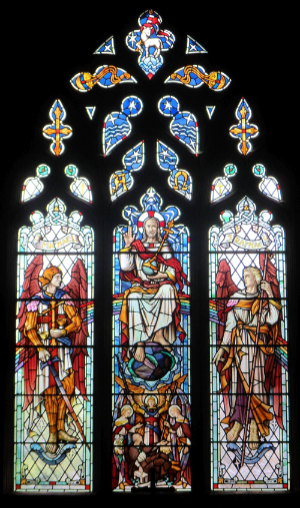
Also in the chancel, there is a window in thanksgiving for all who worshipped in this church.
It depicts the feeding of the five thousand, with Jesus giving thanks.
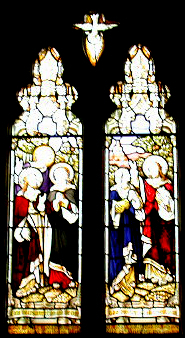
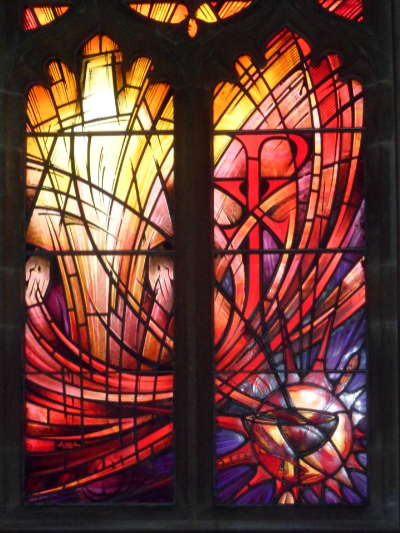
The font was moved to its present position in 1999 .because of the building of an extension and because holy baptism now takes place during the service and it is easier for all to see.

It is inscribed "In celebration of 300 years of worship in this place. 1716 - 2016" and also "In loving memory of Nicholas James Cowell. 1970 - 2010".
The window was kindly donated by Philip and Nellie Cowell of Grimsargh.
Curates and Vicars

by curates from the Preston Parish Church.
Unfortunately, it has not been possible to
trace those who ministered her from 1716 to 1726,
but from that time those who served here were:
| AS CURATES | ||
| 1726 | Richard Thompson. |
|
| 1732 |
Thomas Winder.
|
|
| 1739 | William Parker. M.A. | |
|
Thomas Cowper.
|
||
| 1799 | John Harrison. M.A. | Appointed when 36. Died of apoplexy and was buried at Preston Parish Church. He is commemorated on his son's gravestone in Grimsargh Churchyard. |
| 1823 | Richard Grainger. M.A. | The first occupant of the vicarage. Buried in Grimsargh Churchyard, outside the East Window. |
| 1849 | John Winstanley Hull. M.A. | |
| 1854 | William Pilling. M.A. | Moved to Leicestershire in 1865. In 1885 became Vicar of St Mary Magdalene, Ribbleton. |
| AS VICARS |
|
|
| 1865 | William Harrison. M.A. | Son of John Harrison. In 1875, during his incumbency, Grimsargh became a parish and the Curate became Vicar. He is buried in Grimsargh Churchyard. |
| 1885 | Francis Drinkall Pritt. M.A. | He introduced the wearing of the surplice, Gregorian chants, altar lights and coloured stalls. Installed piped water in the Vicarage which up till then had been served by a pump. |
| 1889 | Tertius Augustus Buzzard. B.A.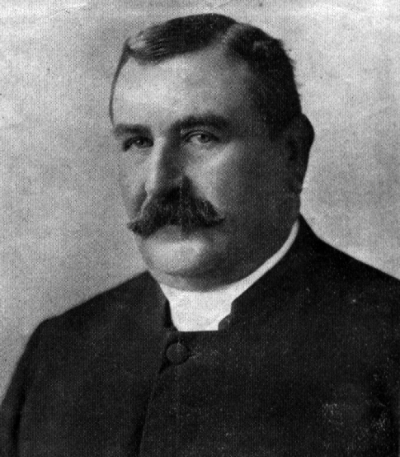 |
He was Squire, doctor and parson in one. Drove round administering home-made remedies and comforts as well as spiritual comforts. Kept peacocks which roosted in the churchyard and vicarage trees and gave lusty warning of imminent rain and visitors. He is buried at Grimsargh. |
| 1928 | Robert George Stanley. |
Retired through ill-health.
|
| 1935 | George Oswald Rubie. M.A. |
Remembered by the school children of his time for his many gifts to the school, his bonfires and firework displays. His film shows relieved the discomfort of war time overcrowding.
|
| 1945 | Philip Douglas Butterfield. M.A. |
During his incumbency the brass candlesticks were removed from the pews and the choir stalls. The pipe organ was replaced by an electronic one.
|
| 1951 | John Harold Brindle. M.A.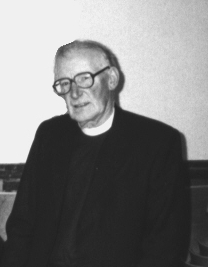 |
Introduced a robed choir. The vicarage was renovated and School House practically re-built. The Churchyard was simplified by the removal of kerb stones and railings. |
| 1988 | Andrew James Haslam. B.Sc. |
Introduced some modern (ASB) services.
|
| 1999 |
Geoffrey Richard Loxham. B.A. |
Building of the kitchen extension completed.
|
| 2012 | Christopher Eigil Halliwell. B.A. Dip H.E. |
The first part-time incumbent at Grimsargh. Worked also part-time as the diocesan environment officer. Choir vestry screening removed - the panels used to construct new cupboards at the kitchen end of the North Aisle and also in the vestry. 300 years of Grimsargh Church celebrated during his incumbency. The path from the Church car par to the School along the old railway was constructed, making it much safer for parents and children to go to and from school. |
| 2017 |
Neil Salt
B.A. B.D. B.Sc.
 |
Introduced a mid-week Holy Communion Service (BCP)
|
| 2023 |
Andy Williams
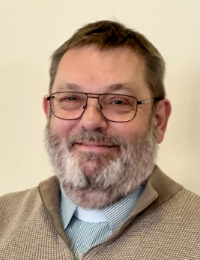 |
|
Mother's Union
For the history of the MU select HERE
For further reading of the church history go to The History of Longridge and District
